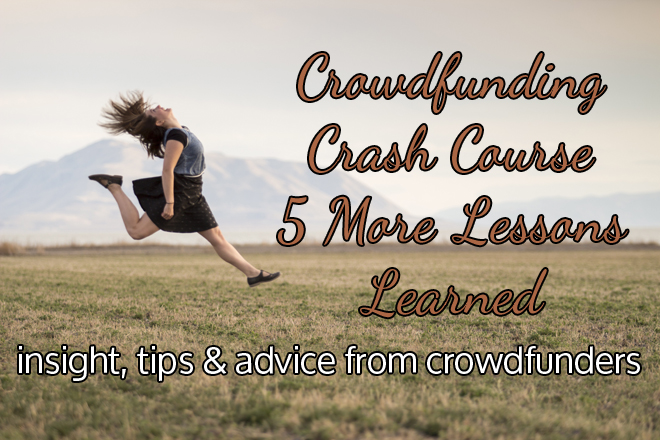Tagged: Interviews
I hate Q&A style interviews
- by Alyson Shane
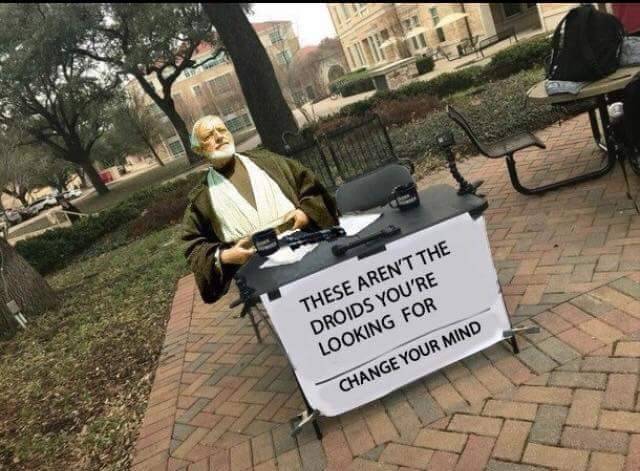
I find them meandering and too long and just a bore to read.
One of the habits I've picked up from reading Hemingway and dealing with clients from NYC is brevity.
I used to be verbose af but these days I can't handle articles that tell me they have facts in them but make me dig through a bunch of "Oh, so you think..." questions and long, meandering answers that circle around the actual answer.
Ugh.
I'm sitting a Barn Hammer on my second beer (Coffee Black Rye Pale Ale) and I just finished putting together questionnaires for this year's TEDxWinnipeg speakers.
One of my jobs as a volunteer on the Social Committee is to coordinate doing these Q&A's with our speakers and as I was sending them out I realized I couldn't remember the opposite of a "Q&A style interview" and remembered that back in the day when I wrote for Spill Magazine I had to do an interview with a local band that I really, really struggled with.
So I looked up the email thread from 2014 and remembered that "narrative style interview" is the name of the interview style that I prefer these days.
I also realized that when I wrote the article I hated narrative-style interviews because I still wasn't confident in my abilities as a writer.
At the time I pushed back at my editor, Stephen, who is a magnificent human being, and said that I was really struggling with doing an interview where I didn't just transcribe what the musicians had said verbatim during our chat.
He told me:
Alyson, you're selling yourself short. You are a great writer and what you put together makes for great music journalism. All I ask is that you don’t close this door on yourself just yet.
Which blew me away because the part I remember is how anxious the exchange made me feel, not what his response to my anxiety was.
(Ain't that always the way?)
I wrote for The Spill for several more years and did heaps of album reviews and interviews, including the time I interviewed Thomas Dolby from his houseboat The Nutmeg of Consolation where I was so nervous that I thought I would swallow my tongue during the interview.
It taught me that when you know good people who push you and support you, eventually you start to realize that you can do anything you put yr mind to.
And with some luck you, too, can be as concise as Hemingway.
Or at least you can give it the 'ol college try.
Crowdfunding Crash Course: Alex Tinsley - Knit It Black
- by Alyson Shane
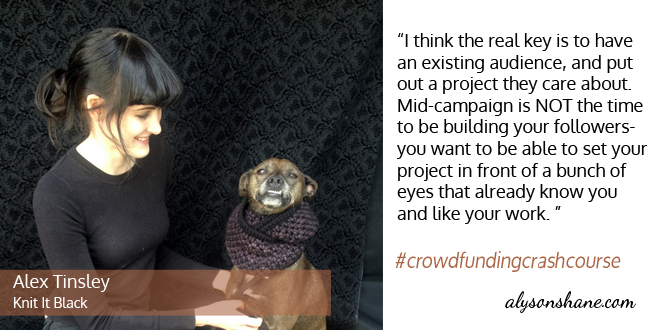
Alex Tinsley has been designing knitting patterns under the label Dull Roar for eight years, and used Kickstarter to fund her project Knit It Black, a collection of all-black knitting patterns.
Can you briefly describe Knit it Black?
Knit It Black is a collection of all-black knitting patterns, designed to raise awareness and funds to benefit animal rescue- specifically, black-coated animals, which have a tougher time finding homes in shelters.
Why did you feel that the crowdfunding model was the best way to promote the project?
Well, my only other choice was to try and fund the whole project out-of-pocket, which may have been do-able, but it wouldn’t have been nearly as good as it can be now. There aren’t a lot of other options for getting funding in this field. Crowdfunding allows people to get involved at the ground floor, support something they believe in, and pre-order the product, in a way.
Why and how did you choose Kickstarter over other crowdfunding options available?
I’ve used Kickstarter before and had a good experience, so I figured, why not? Indiegogo seems like a good option too but I’ve never tried it. Initially I chose Kickstarter because they are the most well-known and widely recognized platform, but when you’re bringing your own audience I’m not sure that choosing one platform over another matters too much.
How big was your budget before you launched your crowdfunding campaign?
Almost nothing, honestly. I made the video with the video functions on my iPhone and Canon DSLR, edited on software that came with my computer; a friend donated the music, and I reached out to my Twitter and Facebook communities for photographs of black pets to use. It’s not a great video, but it gets the point across. If I had been funding the project out of pocket it would have taken a very long time, as I put it together piecemeal between my other work, investing a little bit here and there as I could afford to.
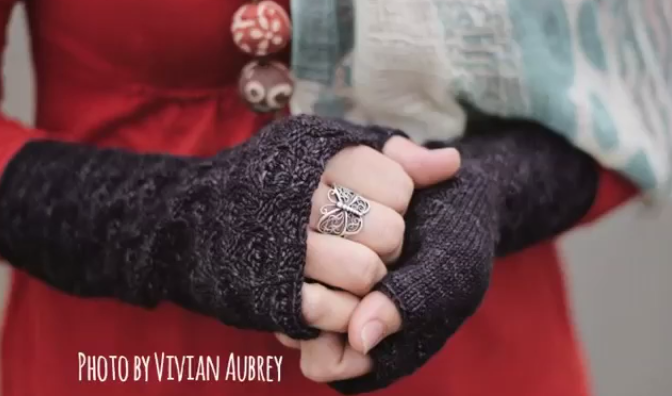
How far along was your project before you felt ready to launch a crowdfunding campaign? In hindsight, would you have preferred to be farther along, or to have crowdfunded earlier?
I had several of the items knit or partially knit, and most of the project planned out in my head, but in July I was offered a good advertising opportunity starting in August and I knew I wanted it to be for the Kickstarter...which meant I needed to get it rolling NOW. Then my photographer had an opportunity to come to town later in August, which means I have to get the knitting done ASAP as well. I feel good about this timeline, though- I work well on a deadline.
Can you explain how you prepared for and managed your campaign?
First I made a big list of all the expenses, to figure out what my goal number needed to be. Then I started brainstorming prizes, and factoring in those costs as well. I reached out to a few people to help me out - the musician, a yarn dyer I had previously mentioned the project to, etc. I was very lucky that everyone was able to work with me on a very quick timeline.
Actually shooting and editing the video was the most gruelling part- I don’t particularly like hearing myself on camera, and dogs never seem to do what you want them to do when you go to record, haha. “Managing” hasn’t been bad- mostly just answering questions as they come up and responding to the feedback I’ve gotten. The real work comes when it ends and rewards need to be fulfilled.
What tools did you use to market your campaign? Do you feel like you did so successfully, and if not, what could you have done differently?
I went through the same channels that I usually use to promote my knit design work - Twitter, Facebook, my blog, my newsletter, Ravelry. It got funded and then some, quite quickly, so I’d say it was successful.
In retrospect what were your best assets for running this successful campaign? On the other hand, what would you do differently?
I think the real key is to have an existing audience, and put out a project they care about. Mid-campaign is NOT the time to be building your followers- you want to be able to set your project in front of a bunch of eyes that already know you and like your work. I don’t think it hurts to appeal to multiple interests - in my case, knitters, animal rescue supporters, and people who like dark fashion. My audience is mostly knitters but I know there’s a lot of overlap.
What was your biggest challenge during your campaign?
Getting it done in a hurry! It’s easy to put off a big project like this, especially when it involves some stuff you don’t really like doing (video, for me) but having a firm deadline really got my butt in gear.
What’s the most valuable advice you could share with aspiring crowdfunders?
Build an audience first- and build the *right* audience! If I have 2000 knitters following me on Twitter and I try to launch a Kickstarter to, say, start a bike company… I’m going to get a lot less response than if I’d matched my project to my audience. Honestly I think that’s far more important than a flashy video or tempting prizes- deliver a project people care about, to the people who care about it.
This post is part of a series! For more interviews and summary posts, check out the Crowdfunding Crash Course page.
Crowdfunding Crash Course: Paul Raphaelson - Sweet Ruin: The Brooklyn Domino Sugar Refinery
- by Alyson Shane
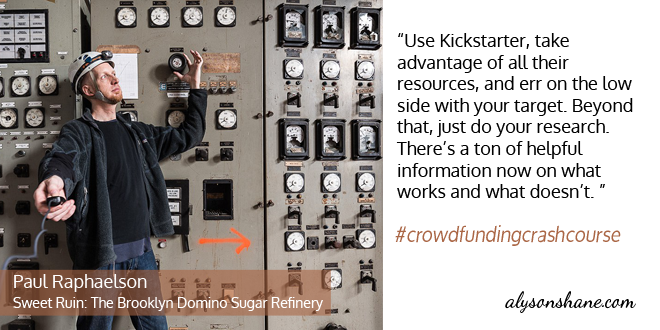
Paul Rahpaelson is an American artist best known for urban landscape photography. His most recent project is Sweet Ruin: The Brooklyn Domino Sugar Refinery, a photography book about the history of the Brooklyn Domino Sugary Refinery, which he funded through Kickstarter.
Can you briefly describe Sweet Ruin: The Brooklyn Domino Sugar Refinery?
Sweet Ruin: The Brooklyn Domino Sugar Refinery is a photography book about the Domino Sugar Refinery. The factory was an icon in Brooklyn and was the biggest sugar factory in the world for much of the last 150 years. I was the last photographer given access to this mind-blowing place before its demolition.
Why did you feel that the crowdfunding model was the best way to promote it?
It’s how art books get made today. Because crowdfunding exists, publishers see it as a way to offload costs and risks. They now expect you to show up not just with a great project, but with pre-sales and cash.
Why and how did you choose Kickstarter over other crowdfunding options available?
My editor was strongly anti-Kickstarter, based on the experiences of her previous clients. The all-or-nothing model killed them. So I looked at Indiegogo and Hatch Fund. The former was just a zoo of half-baked projects. The latter was tightly curated, and offered a lot of coaching and assistance, but didn’t seem to have much marketing reach. I didn’t see many projects making more than a few thousand dollars.
So I went back to Kickstarter. It turns out they have people who will coach you if you seek them out. I got advice that was fantastically helpful.

How big was your budget before you launched your crowdfunding campaign?
My real budget was $36,000, but that seemed impossible, so I decided to crowdfund just the basics (editing, writers’ fees, graphic design, historical pictures, etc..). I’d worry about the publication costs later, and try to get a grant. So I asked for $7,400.
How far along was your project before you felt ready to launch a crowdfunding campaign? In hindsight, would you have preferred to be farther along, or to have crowdfunded earlier?
All the photography and the first round of editing was done. Editing my project video took forever because I didn’t know what I was doing, and wanted it to be good. So it took a lot of learning and procrastination.
Can you explain how you prepared for and managed your campaign?
Well, the video was the big time suck. Getting that done was the hard part. Then I created a project page in Facebook, and started promoting it. This went on for a couple of months. I was advised to get 1000 likes, but never got much past 300. This made me nervous—if I can’t get people to click a button, how will i get them to send money? Eventually I just had to go for it and launch and hope for the best.
What tools did you use to market your campaign? Do you feel like you did so successfully, and if not, what could you have done differently?
I tried a small Facebook ad. That was worthless. Beyond that, I just promoted the page to my friends and family, fellow photographers, people I’d sold prints to, people on my photo mailing list, press and blogs, industrial history groups … anyone who might be interested. I posted interesting updates once a day or two, often including pictures from the project with stories behind them.

In retrospect what were your best assets for running this successful campaign? On the other hand, what would you do differently ?
By far the best asset has been the project itself. It’s turned out to have a much broader appeal than other things I’ve done. People seem to want the book. Kickstarter figured this out—they’ve promoted it a lot. The more people they put in front of, the more people pledge. So Kickstarter’s promotion machine was the other important asset. In the beginning about half my pledges were generated from Kickstarter’s promotions. A week into the campaign it’s more like 80%.
The press is another asset that I hope to benefit from soon. There are stories about the project coming out in local blogs, Architect Magazine, Brooklyn Magazine, and at least one UK Newspaper. I’m hoping those each give the project a bump.
What was your biggest challenge during your campaign?
I’m not sure yet … it’s still in progress.
What’s the most valuable advice you could share with aspiring crowdfunders?
Use Kickstarter, take advantage of all their resources, and err on the low side with your target. Beyond that, just do your research. There’s a ton of helpful information now on what works and what doesn’t.
And obviously, have a compelling project. I have many art projects that I care about deeply, but when I look hard at them, I don’t see the kind of broad appeal that can make a campaign take off. Sweet Ruin is the first one that felt right for this.
This post is part of a series! For more interviews and summary posts, check out the Crowdfunding Crash Course page.
Crowdfunding Crash Course: Jeffrey Martin - Sphericam
- by Alyson Shane

Jeffrey Martin is a photographer of 360, Gigapixel, and Panoramic photos. He used Kickstarter to successfully fund the his product the Sphericam, a 360º video camera.
Can you briefly describe Sphericam?
Sphericam is the world’s only fully spherical, 360º video camera. It records in 4K, has no blind spots, and can be played back on VR headsets like the Oculus and GearVR, as well as your PC or on your iPad.or VR headset. Jeffrey Martin is a photographer of 360, Gigapixel, and Panoramic photos. He used Kickstarter to successfully fund the his product the Sphericam, a 360º video camera.
Why did you feel that the crowdfunding model was the best way to promote the product
Crowdfunding is a great way to market products that are new to the market, or are still in prototype stages. It’s a great way to raise awareness of your product before it goes to market.
Why and how did you choose Kickstarter over other crowdfunding options available?
Kickstarter has the biggest footprint in the world of crowdfunding, and has a huge community of active members who are always searching the site for new products and ideas to back. Plus the site itself does a great job of marketing and promoting the campaigns.
How big was your budget before you launched your crowdfunding campaign?
Somewhere between $15,000 and $20,000 I’d say. This amount went towards the important stuff that makes a good campaign stand out; namely the video, marketing material and ad purchases, the copywriting for the Kickstarter and website pages, and the creation of the website itself.
How far along was your project before you felt ready to launch a crowdfunding campaign? In hindsight, would you have preferred to be farther along, or to have crowdfunded earlier?
I knew that I needed to have the camera pretty much ready before I launched the campaign, more or less at the complete prototype stage. It needed to be able to take pictures at a high enough quality that I could show people what it was going to look like.
This made my campaign different from other types of campaigns: a lot of campaigns can launch without a prototype-ready product that can be developed after the campaign is completed. A camera is different, though, you need to be able to show people exactly what they’re getting, which you can only do by providing images from the actual camera.
Can you explain how you prepared for and managed your campaign?
I had a lot of media contacts from my days as a photographer, so I made a point to reach out to them and make them aware that I was launching my campaign. I also hired a PR company to handle tasks like pitching journalists and news organizations.
I handled all of the email questions and inquiries, though, which was a huge task. While I guess I could have had someone answer them for me, I think that when you’re a small company just starting out people need to be in direct contact with the founders throughout the campaign. Once you’re a company of 10-15 people, then it’s okay to assign a task like that to someone else, but in the beginning your backers and other people with inquiries need to be hearing from you, the founder.

What tools did you use to market your campaign? Do you feel like you did so successfully, and if not, what could you have done differently?
We ran some Facebook ads which were successful, but we didn’t really scale them up because there wasn’t a lot of margin left over. Kickstarter took theirs and we needed to pay the PR company, so we weren’t able to scale up throughout the length of the campaign.
Overall I feel like we did a good job of promoting our campaign, though I wish we’d had a little more top-level press from sites like the New York Times, but… I guess everyone wishes that sort of thing, so that’s okay.
In retrospect what were your best assets for running this successful campaign? On the other hand, what would you do differently?
I feel that the best asset for our campaign was the production value. It’s the most important part of any campaign, in my opinion, because people are going to judge the quality of your product and your idea based on what they see and hear. By hiring a great copywriter and making a great video we were able to instill confidence in our potential backers.
If I could do anything differently I would have tried to generate a bit more buzz about the campaign before it started, though that’s a slippery slope because you don’t want to exhaust all of your promotional options before the campaign even starts or you won’t be able to keep up momentum and interest for very long. So, I guess it’s better to err on the side of secrecy a little bit, at least before you’re fully ready to go.
What was your biggest challenge during your campaign?
Staying sane! Running our Kickstarter was the most relentless 32 days I’ve ever had. It’s totally non stop, and if you do take a day off -which you can, if you plan- you’ll have so much catching up to do the next day that it might not even seem worth it.
What’s the most valuable advice you could share with aspiring crowdfunders?
Be honest with yourself about what you’re not good at and find people who can help you accomplish those tasks. If you’re no good at understanding analytics for ads, copywriting, budgeting, whatever, it’s better to admit that to yourself and to ask for help, rather than struggle through it and potentially waste your own time.
For example, I could have written some copy for the Kickstarter page and the website but I would have really struggled with it, so I decided to pay someone to do it for me, and they did it the right way. You need to learn to delegate tasks, and to be part of a growing team as things progress.
This post is part of a series! For more interviews and summary posts, check out the Crowdfunding Crash Course page.
Crowdfunding Crash Course: Guillaume Rolland - SensorWake
- by Alyson Shane

Guillaume Rolland is an 18-year old entrepreneur from Paris, France. He is the creator of SensorWake, an olfactory-based alarm clock which wakes you up through the power of smell. He used Kickstarter to successfully fund his project.
Can you briefly talk about SensorWake?
SensorWake is an olfactory alarm-clock. It can wake you up only thanks your favourite scent (hot croissant, peppermint, coffee and even the smell of a dollar!)
Why did you feel that the crowdfunding model was the best way to promote the product?
It’s the perfect worldwide showcase to promote your device or idea.
Why and how did you choose Kickstarter over other crowdfunding options available?
Kickstarter is developing the most powerful community; it is multicultural, curious, and respectful about your project.
How big was your budget before you launched your crowdfunding campaign?
We have to create a great video and great images of our product. We don’t communicate about it but we started with less than 10.000€
How far along was your project before you felt ready to launch a crowdfunding campaign? In hindsight, would you have preferred to be farther along, or to have crowdfunded earlier?
You have to begin the preparation about 4-5 months before.
Can you explain how you prepared for and managed your campaign?
We built a strong team and made sure everyone had strong, unique, and different qualities to be ready for all the challenges we expected.
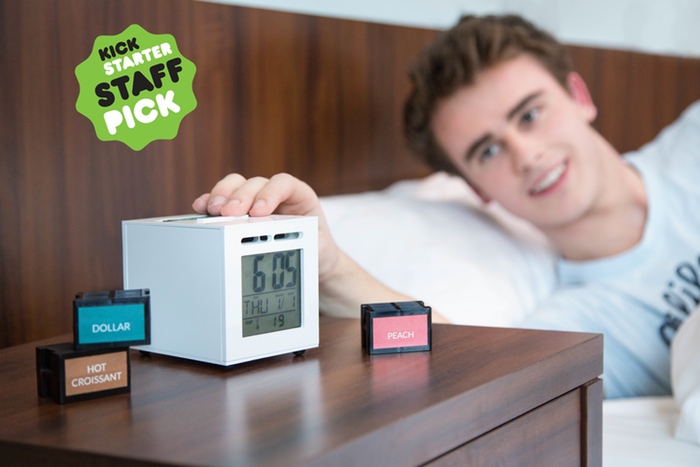
What tools did you use to market your campaign? Do you feel like you did so successfully, and if not, what could you have done differently?
Facebook Ads are a really great key to market the campaign when it’s live. You also have to showcase your product at a real event. For example we attended the Hello Tomorrow Start-Up Village in June; it’s just the perfect way to demonstrate the real qualities of your product, and to meet your very first backers.
In retrospect what were your best assets for running this successful campaign? On the other hand, what would you do differently?
One of our best assets was that we had a strong community before the launch. We more than 7,500 fans on Facebook before the campaign launch, who were our very first ambassadors who promoted our project.
What was your biggest challenge during your campaign?
Our best challenge is to keep in touch with our backers, we have to be close with them but not spend too much time responding to every email or comment.
What’s the most valuable advice you could share with aspiring crowdfunders?
Take your time before launching, develop a strong community and create the perfect crowdfunding page, do not forget that video is 50% of your campaign success.
This post is part of the Crowdfunding Crash Course series. You can find the full list of interviews and summaries here.
Crowdfunding Crash Course: 5 More Lessons Learned
- by Alyson Shane
The Crowdfunding Crash Course is chugging along and I'm amazed at the overwhelming response from participants and readers alike - I'm learning so much, and am loving the journey of sharing interesting and innovative projects with all of you.
With that in mind, let's review some of the key themes that have emerged over the responses so far and see what we've learned:
1. Organize your team before you start
Kelly Stacey of SoLight, who funded their product SolarPuff on Kickstarter, mentioned that keeping up-to-date with backer questions and special requests was especially taxing. "We had a lot of people asking a lot of questions and getting back to all of them (and we did) was very time consuming" she says, and she isn't alone: every single person I've interviewed has mentioned the tremendous level of organization required to run a successful campaign.
Randy Hoyt, who successfully funded two tabletop games, Relic: Expedition and Lanterns: The Harvest Festival on Kickstarter, took the first and last day off work to make sure that he was available to handle all questions and issues that might come up. "The first and last days of your campaign are the busiest" he says.
The takeaway: if you don't feel like you can handle the planning and execution of your campaign, hire someone or organize a team of people to help you with it. Even things as seemingly simple as responding to backer emails, or interview questions can take up a lot of time, and by delegating and being organized you can make sure you're focusing on what matters: making sure your project is fully funded.
2. Tap into your existing audience
Randy Hoyt from Foxtrot games use the momentum from their first tabletop game, Relic: Expedition to build momentum for their next game Lanterns: The Harvest Festival. They had an existing mailing list from the first Kickstarter which they used to spread the word to people who they already knew were interested in tabletop games, and who had already helped fund the earlier project. Meg from Po-Mo, who funded the interactive projector Lumo on Indiegogo, also tapped into her existing email list to spread the word about their campaign.
When Nils Karlen launched his Kickstarter for Simon Stålenhag's two art books Tales from The Loop and Swedish Machines, Lonely Places, he knew that Simon already had a tremendous following online that they could tap into in order to get funding. Fria Ligen used their own networks to promote the project, but what put them over the top was that Simon leveraged his social media channels and his Tumblr to promote it.
The takeaway: if you have an existing audience, or are working with someone who does, reach out to those people first and let them know about your project. If you don't, spend the time before you launch to build an email list, Facebook page, and Twitter following so that people across multiple social channels can stay up-to-date with your progress.
3. Turn funders into contributors
During his first Kickstarter for Relic: Expedition, Randy Hoyt was hesitant to share the script and rough storyboard for the video with his audience. The second time around, he says, he "realized that feedback was so important" and posted the rough storyboard on YouTube and shared it on Twitter and Facebook so that he could get people's feedback. He also allowed backers to vote on different variations of artwork for Lanterns: The Harvest Festival, which increased engagement and excitement about the project.
The takeaway: By offering backers the opportunity to give their input on things like artwork and design you give them an added incentive to back your campaign: not only are they getting a cool product if your campaign meets its goals, but they also get to participate in the creation of something that interests them.
4. Plan your pledge levels for greater success
Nils Karlen mentioned that during his research for Simon's books that they found that having a very low pledge level (a dollar or two) was an important step to get the campaign started because Kickstarter's metrics consider ever pledge, no matter how big or small.
They also used early bird pledges to incentivize people to start donating early (an early bird pledge is a limited pledge level that is strictly better in terms of price than a comparable level.) By offering limited-time options it mobilizes backers early on, and it also gives you opportunities to promote the campaign by appealing to this sense of urgency eg: "only two more days of our Early Bird $10 option!"
The takeaway: It might seem tempting to only offer pledges at higher dollar values because it will feel like getting closer to your goal faster, but remember that everyone who contributes to your campaign will likely spread the word about it, as well, and you don't want to alienate potential backers by only offering expensive options. Try to create a pledge system with rewards and dollar amounts that appeal to everyone.
5. Don't get discouraged
There will be slow days, no-news days, and days when everything feels as though it's come to a grinding halt. This is normal. What's important is to stay motivated and think realistically, and use those "down" days as days to find other ways to stay motivated and positive about your project.
Tamar Swartz, who used Indiegogo to fund her project Journey to Creative Surrender, mentioned in her interview that she had to remind herself that contributions come in waves, and just because there's a lull doesn't mean that there's a reason to get discouraged, and Mike Raven mentioned in his Traveling Book interview that he also struggled to stay motivated in between donations.
The takeaway: Don't let a slow day get you down! It's totally normal to get stressed out or feel anxious if your project isn't funded within the first few days, but as long as you stick to your promotional schedule and continue to do things like respond to emails, send out updates and stay active on social media you'll soon see another surge of backers.
This post is part of the #CrowdfundingCrashCourse series. You can find the entire series of interviews and summary posts here.
Crowdfunding Crash Course: Stacy Kelly - SolarPuff: A Unique Little Solar Light
- by Alyson Shane
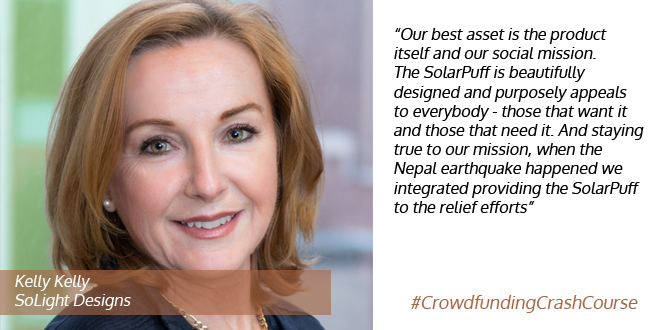
Stacy Kelly is a Co-Founder and Chief Operating Officer of Solight Design. She has the dual role of being responsible for managing the manufacturing and shipment of our products while also developing strategic business relationships, and used Kickstarter to fund the SolarPuff, an inflatable solar-powered lamp.
Can you briefly describe the SoLight SolarPuff?
SolarPuff: A Unique Little Solar Light. It’s a patent pending light-weight solar powered lantern that packs flat and easily pops open. It is made with recyclable material, it is water resistant and it floats. Great for camping, boating and outdoors, as well as disaster relief, emergency lighting and ambiance.
Why did you feel that the crowdfunding model was the best way to promote the product?
We feel that the crowdfunding model provides the opportunity to test your product demand with a large group of early adopters who at the same time will (potentially) provide the funding to get your idea to market. It was never really a question as to whether or not we would go the way of crowdfunding, it was just a matter of when.
Why and how did you choose Kickstarter over other crowdfunding options available?
We chose Kickstarter over the other platforms mostly because of word of mouth. We know a few other people who had run successful campaigns on Kickstarter and due to their experiences we felt more comfortable following their lead. In addition, the Kickstarter platform is extremely user friendly and they make it as simple as possible to get your campaign up and running. They also have a huge community and market aggressively to the community on your behalf and to keep them engaged.
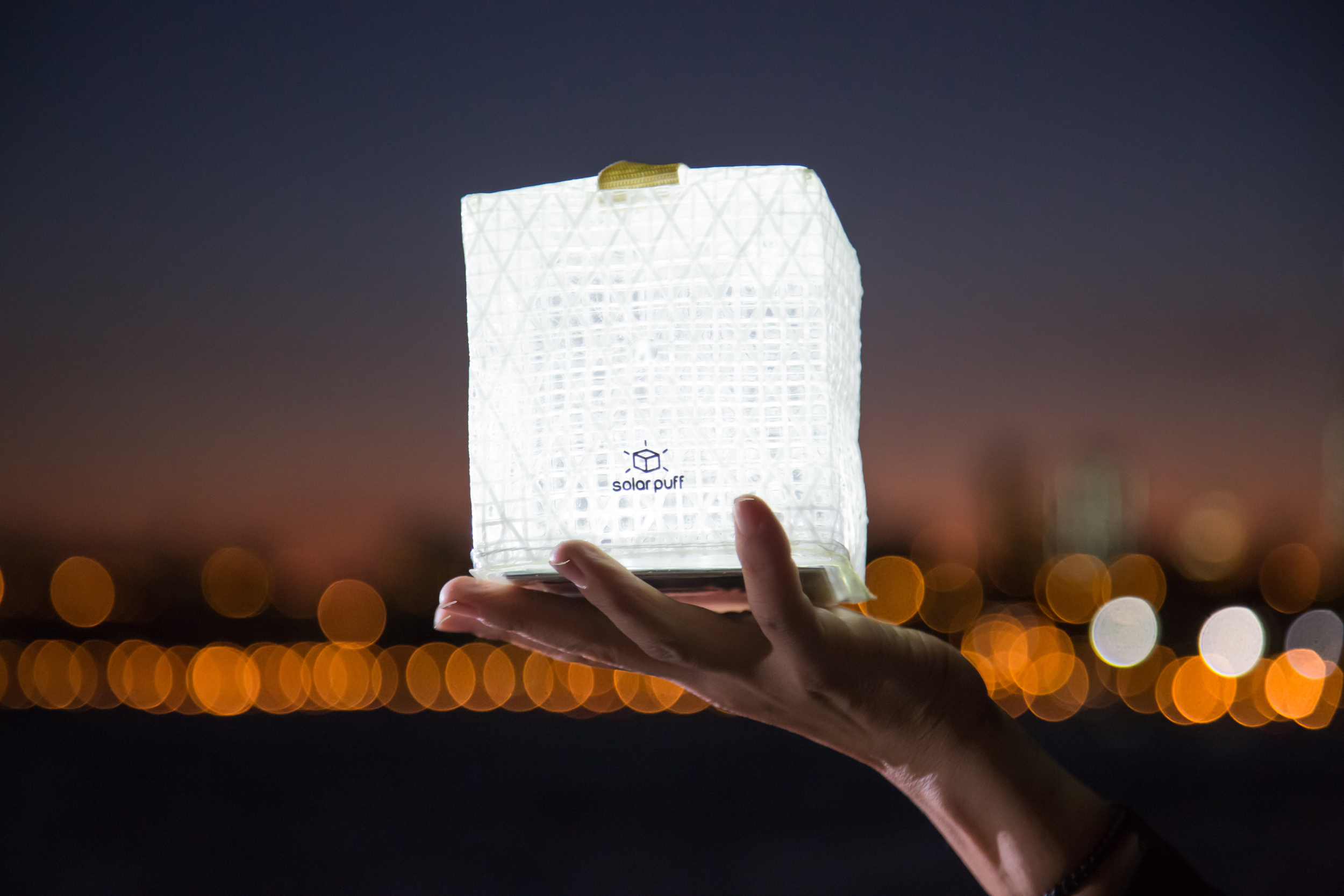
How big was your budget before you launched your crowdfunding campaign?
Budget??? What budget? Seriously, we were fortunate to know some very generous people such as Frederic King, our videographer, who worked pro bono. We used our own social and email networks to get to our initial goal of $25,000. We spent about $200 on Facebook advertising and another $200 with crowdfunding networks. We were advised by other successful campaigners to avoid buying into all the PR companies that approach you, unless somebody you know recommends them.
How far along was your project before you felt ready to launch a crowdfunding campaign? In hindsight, would you have preferred to be farther along, or to have crowdfunded earlier?
The SolarPuff, our first product has been on the drawing board for a few years with patents pending. We launched Solight Design about 18 months ago. We started manufacturing the SolarPuff in Q3, 2014 and completed our website in Dec, 2014 with a soft launch in January. We sold over 1000 units in 2 months. We presented to MoMA in Q3 and got positive feedback and knew now was the time to take it to the public. The fastest and most economical way was through Kickstarter, besides, we needed funding to purchase more inventory. I think we launched at just the right time in our business cycle.
Can you explain how you prepared for and managed your campaign?
We prepared by organizing our email lists and upping our social media outreach. We worked with our videographer and edited until we were happy with it. We fine tuned our “story” over and over again. A big part was coming up with the reward packages to make them authentic to our mission and to promote the product. We had given ourselves an April 22nd campaign launch date and spent the prior 2 months working on all the pieces.
What tools did you use to market your campaign? Do you feel like you did so successfully, and if not, what could you have done differently?
Our marketing campaign was not extravagant. We purchased advertising on Facebook to “boost” our posts, we paid two crowdfunding outreach companies for PR, one of which also included us in their web blog. The best and biggest boost to our campaign came from Kickstarter themselves (unpaid). Once they promoted us as “Projects We Love”, it was a game changer. In 24 hours we raised over $125K. That really put us on the map and after that a number of media outlets contacted us and helped to get us to $447K. “It take a village.”
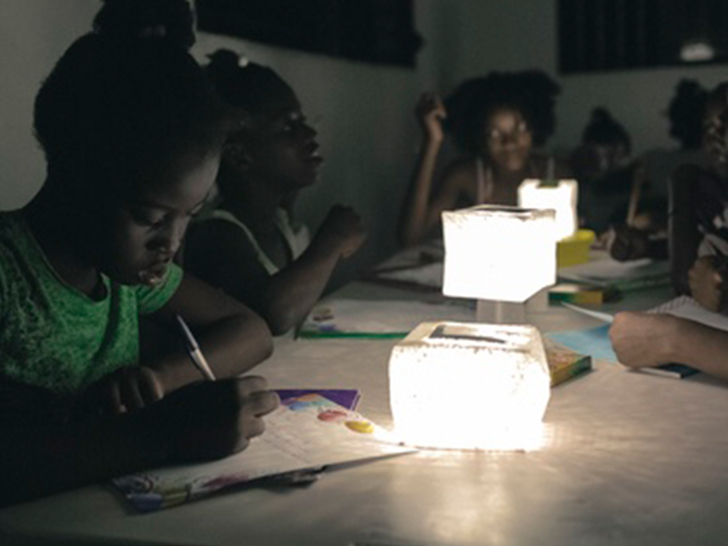
In retrospect what were your best assets for running this successful campaign? On the other hand, what would you do differently?
Our best asset is the product itself and our social mission. The SolarPuff is beautifully designed and purposely appeals to everybody - those that want it and those that need it. And staying true to our mission, when the Nepal earthquake happened we integrated providing the SolarPuff to the relief efforts. I think many people connected with our appeal and were happy to be able to do something to help the Nepali people.
Hindsight is 20/20 of course. What we’d do differently is plan for an overwhelming success and have more product on hand, however it is a catch 22. We went on Kickstarter to get funding for more inventory and now we need even more inventory to fulfill our orders.
We would have been more saavy about “stretch goals”. We didn’t quite understand the value and importance of them to the backers. We really didn’t offer any stretch goals except seeds which were a bust (a story for another time).
What was your biggest challenge during your campaign?
The biggest challenge is staying organized. We had a lot of people asking a lot of questions and getting back to all of them (and we did) was very time consuming. We also had a lot of people making special requests with regard to their pledges (send two to Nepal instead of buy one, give one; ship to a vacation home, wanting to mix and match reward tiers, etc). You need to keep notes on each of these and that too requires time and organization. Now the hardest part is collecting each backers (close to 7000) shipping info and confirming their pledges is another organizational challenge.
So in closing, I will tell you that it was a wonderful, exciting and validating experience. Every hour brought us to a new level. Every backer validated that the SolarPuff is a great product. The comments from most of our backers were so supportive that it would make the most jaded person optimistic.
I think every person with a good product and a good idea should go the crowdfunding route. We were very lucky to have gone wildly over our goal. As the philosopher Seneca, said, “Luck is what happens when preparation meets opportunity.”
This post is part of the #CrowdfundingCrashCourse series. You can find the entire series of interviews and summary posts here.
Crowdfunding Crash Course: Tamar Swartz - Journey to Surrender
- by Alyson Shane
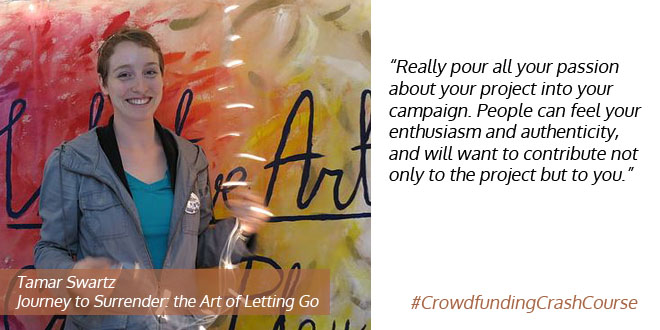
Tamar Swartz is a Canadian mixed media visual artist following her creative intuition in painting, drawing and collage. She used Indiegogo to fund her art project Journey to Surrender: The Art of Letting Go.
Can you briefly describe Journey to Surrender: The Art of Letting Go?
Journey to Surrender: The Art of Letting Go is a creative project currently being developed during a 6 month artist residency in Budapest, Hungary. It’s about following your own creative intuition and allowing a piece of art to emerge and breathe, like any living organism would. It’s about trusting yourself and embracing the creative process while releasing conceptual and intellectual approaches to art making.
Journey to Surrender is a three-part project. Part one is my own mixed media visual art practice and walking the pathways of Creative Surrender. Part two is collaborating with other artists to find Creative Surrender together. Part three is facilitating workshops for local participants to experience this form of expressive visual art making.
Once the project is complete, my experience will be integrated into the Intuitive Art workshops that I facilitate. You can read more here.
Why did you feel that the crowdfunding model was the best way to promote the project?
A large part of the project is to have other people involved and engaging with expressive mixed media visual art and Creative Surrender. Crowdfunding seemed like an obvious choice to spread the word and build momentum about realizing Journey to Surrender. Additionally, once the artist residency is completed, I will be integrating what I have learned into my Intuitive Art workshop facilitation.
Why and how did you choose Indiegogo over other crowdfunding options available?
I looked at Kickstarter as an option, but wasn’t completely sure about the all/nothing model for Journey to Surrender: It seemed like a big leap of faith.
I was also under the impression that my project would have to first be approved by Kickstarter before the campaign launches, a process that takes time. I was on a short timeline and ready to start the campaign. Indiegogo has a really easy to navigate platform and their customer service is very helpful.
How big was your budget before you launched your crowdfunding campaign?
I’m not 100% sure how to answer this question…are you asking about the financial resources that were needed to make Journey to Surrender happen, that I had before starting my campaign? If so, $0. Or, are you asking about how much money I spent building/marketing my campaign? $0 but a lot of time, energy and creativity.
How far along was your project before you felt ready to launch a crowdfunding campaign? In hindsight, would you have preferred to be farther along, or to have crowdfunded earlier?
Journey to Surrender did not officially start until I landed in Budapest, so my Indiegogo campaign was a “pre-project” campaign. Within the week that I received confirmation that my residency application was accepted, I started building my campaign. I drew on my Intuitive Art facilitating experience (2 years) and all my art from my own creative practice. It was now-or-never for me.
Can you explain how you prepared for and managed your campaign?
It took about 2 weeks building my campaign. I spent a lot of time making sure it clearly said what I wanted, adding photos that represented Intuitive Art, and designing perks at different price levels. I asked a few close friends to check it before I launched and got some valuable feedback. Also, these friends were “cheerleaders” throughout the campaign and helped me spread the word about Journey to Surrender.
I also made a timeline of my campaign and set up a schedule of when to send out invites and reminders to participate in the campaign. I was successful in not spamming people. I also made funding goal targets, which turned out to be flexible.
What tools did you use to market your campaign? Do you feel like you did so successfully, and if not, what could you have done differently?
I mostly used social media and personal social networks to market my campaign. I posted on my Facebook, Twitter and Instagram accounts. Hashtag everything!
I also sent a lot of personal emails and Facebook messages to friends, family and acquaintances who I thought would be interested in knowing about my project. I received a lot of positive feedback.
Out of all the generous contributions, only 2 were received from complete strangers. Next time I would like to know how to crack that line between friends/family/acquaintances and complete strangers.
In retrospect what were your best assets for running this successful campaign? On the other hand, what would you do differently?
My best asset for this campaign was my enthusiasm and a really compelling combination of a written pitch, images of my art and perks that were appealing. I received a lot of positive support from friends and family!
I think that having a campaign video could be fun for next time. But, I realized that for Journey to Surrender it wasn’t completely necessary.
What was your biggest challenge during your campaign?
Holding faith that it would be successful. There are days where no one contributes or seems to be talking about it, which is feels like nothing is happening. But, even on those days I had to remind myself that contributions come in waves. It was really incredible how in the last 42 hours people really rallied and funds were literally flowing in. Journey to Surrender ended up being 135% funded! There’s something about the pressure of the campaign ending that motivates people to contribute.
What’s the most valuable advice you could share with aspiring crowdfunders?
Really pour all your passion about your project into your campaign. People can feel your enthusiasm and authenticity, and will want to contribute not only to the project but to you. Be open to surprises! Sometimes the people who you expect to contribute don’t, and the people who weren’t even on your radar do. Don’t take anything personally and always always ALWAYS practice gratitude. Even the smallest contribution is important. Also, be mindful that sometimes contributions are not monetary.
This post is part of the #CrowdfundingCrashCourse series. You can find the entire series of interviews and summary posts here.
Introducing: the Crowdfunding Crash Course!
- by Alyson Shane
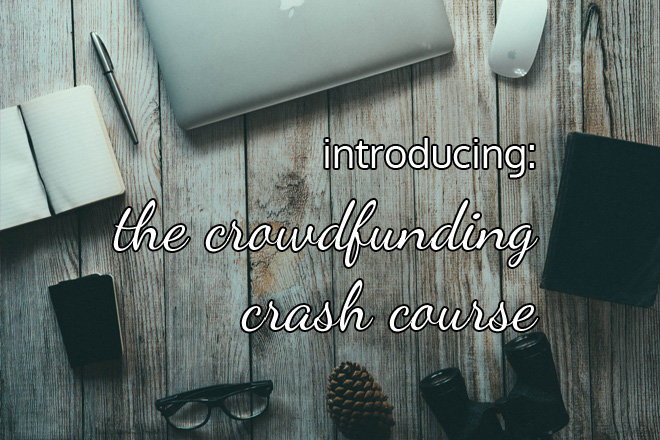
The other weekend John and I finally sat down and watched Indie Game: The Movie. This amazing piece of cinema is from Canadian filmmakers James Swirsky and Lisanne Pajot. It follows indie video game developers as they struggle to develop and release Super Meat Boy and Fez, respectively, as well as interviews with Jonathan Blow, the developer behind Braid.
James and Lisanne ran two successful crowdfunding campaigns to fund the film, and after the movie I got to wondering: what makes a crowdfunding campaign successful?
Having never run a crowdfunding campaign myself, I figured that the best way to gain a deeper understanding of this booming phenomenon was to seek out knowledge from those around me.
With that in mind, I'm launching the #CrowdfundingCrashCourse project, where I'll be interviewing startups, musicians, businesspeople, and anyone else I can find who can share their experiences about running a crowdfunding campaign.
The first post, which will go up this week, is with Adam Brooks of Winnipeg-based film production company Astron-6, who used Indiegogo to crowdfund their movie The Editor.
I'm really excited to be starting this project and to share it with you and am always looking for new participants to share their knowledge. If you've run a crowdfunding campaign, or know someone who has and should be featured as a part of this project, please feel free to give me a shout.
This post is part of the #CrowdfundingCrashCourse series. You can find the entire series of interviews and summary posts here.
just finished an interview with Thomas Dolby
- by admin
had to skype 'm because downtown LA has no cell reception
and so we skyped and I sounded like a dumbass
asking him about his new album (which I love), his floating studio, and the music scene
and he was nice and clever and charming
which of course is no surprise
my interview will be up at The Spill Magazine soon
and until then you can purchase A Map of the Floating City here
which you should do because it's really, really good

